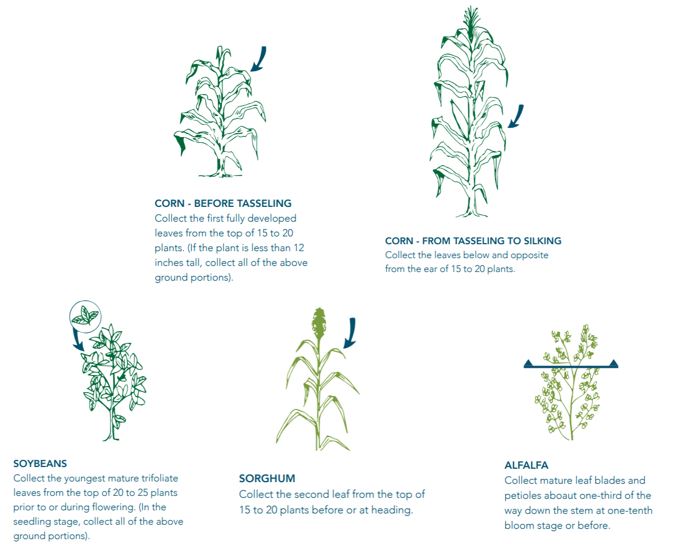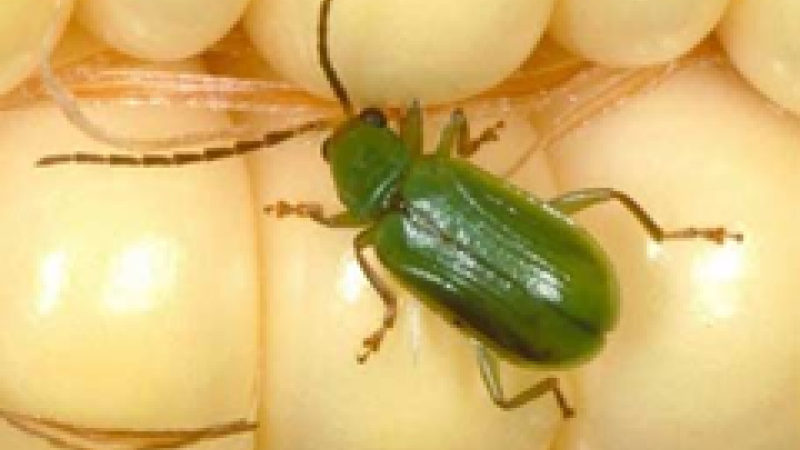Tissue Sampling
Tissue samples can be used to help identify and confirm deficiencies in season or even assess nutrient uptake in relation to fertilizer programs. There are several facilities that offer tissue sampling for a variety of crops. Most of the time if you contact these sampling facilities, they will send you proper tissue bags and forms for sampling. If you don’t have a tissue bag on hand use a clean paper lunch sack and write down the required information for the facility. Sample early in the morning and earlier in the week so tissues can be processed quickly.
The goal of tissue sampling is to get good reliable samples that will help you evaluate the deficiency you are observing or understand the nutrient uptake occurring in your crop. A tissue sample only provides a snap shot of the nutrient status at sampling timing. The following is a list of what to do and avoid while sampling:
Do
- Sample early in the day and get samples to your desired testing facility as soon as possible
- Sample earlier in the week so samples arrive to the facility before the weekend
- Use a paper bag to allow air movement so samples don’t mold
- Rinse soil/potential fertilizer residue from leaves with clean water and dry with clean towels
- Clearly label your samples
Don’t
- Include soil residue on tissue samples
- Use a sealed plastic bag so samples mold
- Sample at 5 o’clock on a Friday and leave soil samples in your vehicle over the weekend-just sample first thing Monday
- Leave samples in your truck for a week – resample if you don’t get samples mailed in timely
- Wrap samples in damp paper towels so they mold
What tissue should I sample?
This is a common question when someone is new to tissue sampling. Most testing facilities publish the tissue and stage to sample so you are obtaining reliable samples. If you are testing for deficiency issues it is wise to sample plants were the deficiency is apparent in the field as well as a healthy group of plants for reference. The following sampling guidelines are from Midwest labs, but there are other valuable testing facilities so double check with your facility.
Corn
- 15-20 plants are typical sampling size
- Plants 12 inches tall or less collect entire above ground portion of the plant
- Plants taller than 12 inches until tasseling collect the first fully developed leaf with collar showing
- From tasseling to silking collect the leaf below and opposite the ear
Soybean
- 15-20 plants are typical sampling size
- Plants 12 inches tall or less collect entire above ground portion
- Prior to or during flowering collect the youngest mature (fully extended) trifoliate
Sorghum
- Collect 2nd leaf from top with fully developed collar of 15-20 plants before and during heading
If you have further questions on tissue sampling or concerns about nutrient deficiencies reach out to your local Hoegemeyer DSM or agronomist for further questions.

Sources
- https://midwestlabs.com/wp-content/uploads/2017/01/Sampling-Guide-For-Plant-Tissue-Analysis-0910.pdf
- https://crops.extension.iastate.edu/cropnews/2019/06/tissue-testing-field-crops-requires-cautious-use-and-interpretation-0
- https://extension.umn.edu/testing-and-analysis/understanding-plant-analysis-crops

